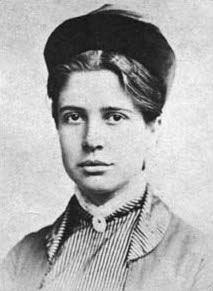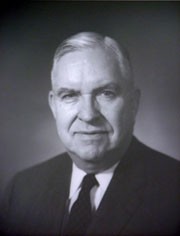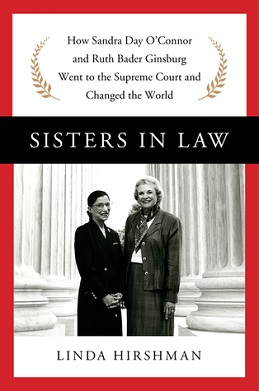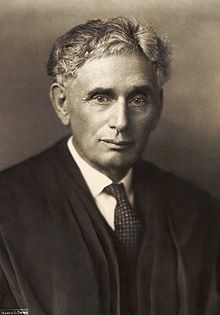Muller v. Oregon, 208 U.S. 412 (1908), was a landmark decision by the United States Supreme Court. Women were permitted by state mandate fewer working hours than those allotted to men. The posed question was whether women's liberty to negotiate a contract with an employer should be equal to a man's. The law did not recognize sex-based discrimination in 1908; it was unrecognized until the case of Reed v. Reed in 1971; here, the test was not under the equal protections clause, but a test based on the general police powers of the state to protect the welfare of women when it infringed on her fundamental right to negotiate contracts; inequality was not a deciding factor because the sexes were inherently different in their particular conditions and had completely different functions; usage of labor laws that were made to nurture women's welfare and for the "benefit of all" people was decided to be not a violation of the Constitution's Contract Clause.

Joan Ruth Bader Ginsburg was an American lawyer and jurist who served as an associate justice of the Supreme Court of the United States from 1993 until her death in 2020. She was nominated by President Bill Clinton to replace retiring justice Byron White, and at the time was viewed as a moderate consensus-builder. Ginsburg was the first Jewish woman and the second woman to serve on the Court, after Sandra Day O'Connor. During her tenure, Ginsburg authored the majority opinions in cases such as United States v. Virginia (1996), Olmstead v. L.C. (1999), Friends of the Earth, Inc. v. Laidlaw Environmental Services, Inc. (2000), and City of Sherrill v. Oneida Indian Nation of New York (2005). Later in her tenure, Ginsburg received attention for passionate dissents that reflected liberal views of the law. She was popularly dubbed "the Notorious R.B.G.", a moniker she later embraced.

Felix Frankfurter was an Austrian-born American jurist who served as an Associate Justice of the Supreme Court of the United States from 1939 until 1962, during which he was an advocate of judicial restraint.

Florence Moltrop Kelley was a social and political reformer and the pioneer of the term wage abolitionism. Her work against sweatshops and for the minimum wage, eight-hour workdays, and children's rights is widely regarded today.
Reed v. Reed, 404 U.S. 71 (1971), was a landmark decision of the Supreme Court of the United States holding that the administrators of estates cannot be named in a way that discriminates between sexes. In Reed v. Reed the Supreme Court ruled for the first time that the Equal Protection Clause of the Fourteenth Amendment to the United States Constitution prohibited differential treatment based on sex.

Anna Pauline "Pauli" Murray was an American civil rights activist, advocate, legal scholar and theorist, author and – later in life – an Episcopal priest. Murray's work influenced the civil rights movement and expanded legal protection for gender equality.

Josephine Clara Goldmark was an advocate of labor law reform in the United States during the early 20th century. Her work against child labor and for wages-and-hours legislation was influential in the passage of the Keating–Owen Act in 1916 and the later Fair Labor Standards Act of 1937.
United States v. Virginia, 518 U.S. 515 (1996), is a landmark case in which the Supreme Court of the United States struck down the long-standing male-only admission policy of the Virginia Military Institute (VMI) in a 7–1 decision. Justice Clarence Thomas, whose son was enrolled at the university at the time, recused himself.

Equality before the law, also known as equality under the law, equality in the eyes of the law, legal equality, or legal egalitarianism, is the principle that all people must be equally protected by the law. The principle requires a systematic rule of law that observes due process to provide equal justice, and requires equal protection ensuring that no individual nor group of individuals be privileged over others by the law. Sometimes called the principle of isonomy, it arises from various philosophical questions concerning equality, fairness and justice. Equality before the law is one of the basic principles of some definitions of liberalism. It is incompatible with legal slavery.
The Brandeis Medal is awarded to individuals whose lives reflect United States Supreme Court Justice Louis Brandeis' commitment to the ideals of individual liberty, concern for the disadvantaged and public service.

Erwin Nathaniel Griswold was an American appellate attorney and legal scholar who argued many cases before the U.S. Supreme Court. Griswold served as Solicitor General of the United States (1967–1973) under Presidents Lyndon B. Johnson and Richard M. Nixon. He also served as the dean of Harvard Law School for 21 years. Several times he was considered for appointment to the U.S. Supreme Court. During a career that spanned more than six decades, he served as member of the U.S. Commission on Civil Rights and as president of the American Bar Foundation.
Weinberger v. Wiesenfeld, 420 U.S. 636 (1975), was a decision by the United States Supreme Court, which unanimously held that the gender-based distinction under 42 U.S.C. § 402(g) of the Social Security Act of 1935—which permitted widows but not widowers to collect special benefits while caring for minor children—violated the right to equal protection secured by the Due Process Clause of the Fifth Amendment to the United States Constitution.

Martin David Ginsburg was an American lawyer who specialized in tax law and was the husband of American lawyer and U.S. Supreme Court Justice Ruth Bader Ginsburg. He taught law at Georgetown University Law Center in Washington, D.C., and was of counsel in the Washington, D.C., office of the American law firm Fried, Frank, Harris, Shriver & Jacobson.
Peter William Huber was a Canadian-American lawyer and author. He was a senior fellow at the Manhattan Institute and was a founding partner at the law firm of Kellogg, Huber, Hansen, Todd, Evans & Figel. He is credited with popularizing the term "junk science" in 1991, and articulating a conservative approach to environmentalism in his 2000 book, Hard Green: Saving the Environment from the Environmentalists.

Louis Dembitz Brandeis was an American lawyer who served as an associate justice on the Supreme Court of the United States from 1916 to 1939.
Maternalist Reforms in the United States were a series of progressive social reform laws passed beginning in the late 19th and early 20th centuries focused on providing state assistance to mothers with young children lacking the financial support of a male member of the household. This assistance took several forms, including mothers’ pensions and limits on the maximum working hours for women. Female activists were the primary advocates for these reforms, which reflected a maternalist ideology that “exalted women’s capacities to mother and extended to society as a whole the values of care, nurturance and morality” and held that the government had an obligation and an interest in protecting and improving the living standards of women and children.

The Hughes Court refers to the Supreme Court of the United States from 1930 to 1941, when Charles Evans Hughes served as Chief Justice of the United States. Hughes succeeded William Howard Taft as Chief Justice after the latter's retirement, and Hughes served as Chief Justice until his retirement, at which point Harlan Stone was nominated and confirmed as Hughes's replacement. The Supreme Court moved from its former quarters at the United States Capitol to the newly constructed Supreme Court Building during Hughes's chief-justiceship.

Sisters in Law: How Sandra Day O'Connor and Ruth Bader Ginsburg Went to the Supreme Court and Changed the World is a 2015 non-fiction book by Linda Hirshman. The book examines the legal careers and judicial records of Sandra Day O'Connor and Ruth Bader Ginsburg, the first and second women appointed to the Supreme Court of the United States.











